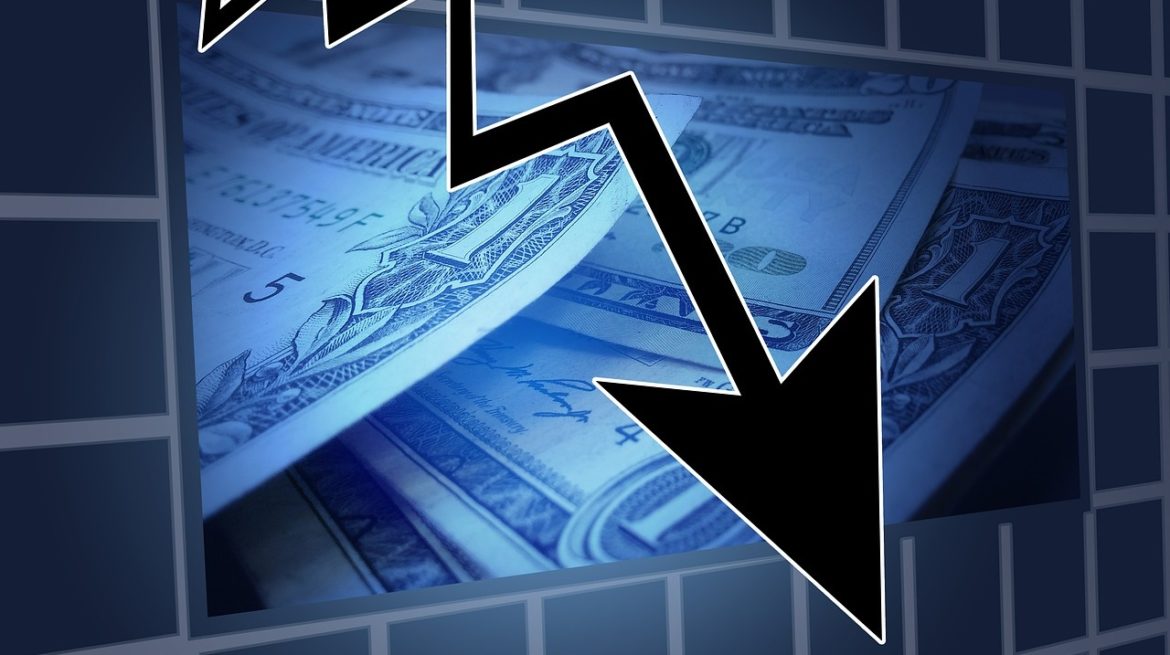Gold has all the potential to go unprecedentedly high. But silver will be gold on
Site:
Precious metals news
Fiat economies face hyperinflation when central banks, like the Federal Reserve, overprint money. Austrian economic theory warns that such policies may lead to a "crack-up boom"—a severe crash after a fake economic boom fueled by low interest rates and bad investments. The Fed's continuous interventions prevent necessary market corrections, potentially ending in hyperinflation and a collapsed monetary system. Political resistance to reform points to a looming crisis, suggesting that local self-reliance may become essential.
The US commercial real estate sector is in crisis, with widespread underutilization of office spaces leading to financial strain on regional banks holding unrecognized losses. Occupancy levels post-pandemic are stuck at about half, and property values have dropped by up to 45%. With $5.5 trillion in debts and interest rates rising, the sector faces distressed sales and significant lender losses. Banks are cautious about refinancing, potentially leading to a wave of consolidations and a broader financial impact. The situation mirrors the pre-conditions of previous financial crises, with the Fed's temporary measures failing to address deeper solvency issues.
 17 Million Households Starving, Highest In 11 Years: US Food Insecurity Crisis Erupts
17 Million Households Starving, Highest In 11 Years: US Food Insecurity Crisis EruptsOct 30, 2023 - 06:08:24 PDT
President Biden hailed the latest job numbers as a success of his economic policies, but many working-class Americans remain skeptical. Distrust in the government's economic figures is rising as the USDA reports a surge in food insecurity to the highest since 2014, affecting nearly 13% of households. The situation may be worsening in 2023, with persistent inflation hitting low and middle-income families hard, leading to depleted savings and increased credit card debt. Wall Street banks are also signaling a downturn as consumer financial strain is reflected in record-high subprime auto loan delinquencies.
81% of Americans haven't increased their emergency savings this year, with many dipping into savings for regular expenses due to inflation and high costs, according to a Bankrate survey. Meanwhile, withdrawals from retirement funds are on the rise, and nearly half of Americans feel inflation is lowering their living standards.
A Georgia couple nearly lost more than $186,000 in a gold scam. But they ended up turning the tables and scamming the scammers.
The Biden administration's aggressive energy standards could impose an extra $9,100 burden on U.S. households, per a consumer watchdog report. The Alliance for Consumers criticizes these regulations for significantly hiking prices of basic home appliances and limiting consumer choice, branding the move as economically punitive and overly restrictive. Experts slam the policies for sacrificing appliance performance and market freedom under the guise of climate change, with small businesses facing potentially crippling compliance costs.
The mainstream remains optimistic about the trajectory of the economy. Price inflation has supposedly been beaten down. GDP growth was even better than expected, and most economists have tabled their recession predictions. But in his podcast, Peter Schiff explained that it's all an illusion. The financial crisis has already started, and it continues to play out beneath the radar.Nobody understands that this crisis has started. But believe me, it has. This was the way the 2008 financial crisis started. It didn't just happen when Lehman Brothers went bankrupt."
 GOLD & SILVER MARKET UPDATE OCT 30th: Fundamental Analysis Of Hedgers & GLD-SLV Inventories
GOLD & SILVER MARKET UPDATE OCT 30th: Fundamental Analysis Of Hedgers & GLD-SLV InventoriesOctober 30, 2023
After the massive spike in the gold price since the Hamas-Israeli Conflict started, what's happening with the Commercial Hedgers and major ETF Inventories? Interestingly, we are not seeing the same reaction from investors who moved into the GLD & SLV during the Russian-Ukraine War...
Gold prices have surged past $2,000 per ounce, marking the first time since May, driven by geopolitical tensions in the Middle East. Despite strong US yields and a resilient dollar, gold's appeal as a safe-haven asset has propelled its rise by nearly 10% this month. Experts like Saxo Bank's Ole Hansen suggest that if gold maintains above the $2,000 mark, it could surpass its prior record highs. The rising gold price, indicates that gold might be still undervalued. Geopolitical events and concerns over the US government's fiscal health further support the bullish outlook for gold.
Gold prices continued to rise for the third consecutive day, influenced by declining US Treasury bond yields. Despite positive US economic data, including a Q3 GDP growth of 4.9% and a rise in September's durable goods orders, the 10-year bond yield fell to 4.86%. This decline in bond yields boosted gold's value. Treasury Secretary Janet Yellen attributed the bond yield movement to the strength of the US economy.
 Tucker Carlson Issues Dire Warning For America: "Abrupt Change Is Coming"
Tucker Carlson Issues Dire Warning For America: "Abrupt Change Is Coming"Oct 27, 2023 - 12:55:52 PDT
Tucker Carlson sounded alarms about a looming "abrupt change" due to Washington DC's disconnect with everyday Americans. He voiced concerns over rising food inflation and the youth's housing struggles. Carlson criticized state surveillance, likening it to East German tactics, and cautioned against potential conflict with Iran. Highlighting the U.S.'s growing internal divisions, he warned of brewing chaos and questioned leadership priorities. Carlson urged for a shift in focus to prevent imminent upheaval. You can say you care about America, but if you’re sending $100 billion to foreign countries right now, you’re lying.
 The S&P 500 Has Officially Erased $4 Trillion in Market Value Since Its July 27th High
The S&P 500 Has Officially Erased $4 Trillion in Market Value Since Its July 27th HighOct 27, 2023 - 12:49:42 PDT
In 3 months, the S&P 500 has dropped 430 points and stands less than 1% away from correction territory.
The exact top in the S&P 500 came on the same day that Fed removed a recession from their forecast.
As markets fall to their lowest levels since May 2023, we are in a much different environment.
Last time the S&P 500 was at current levels, 3 rate CUTS were priced-in for 2023.
Now, rates are higher and futures are no longer showing rate cuts until July 2024.
Are stocks pricing-in a recession?
Image
Gold is eclipsing the S&P 500 in 2023, approaching a significant $2,000 mark. While the stock market struggles since the beginning of the year, gold's rally showcases a 9.2% increase. This outperformance isn't new; gold has consistently bested stocks in 2020 and 2022. Amid mounting distrust in central banks, coupled with weakening confidence in bonds, Federal Reserve policies, and Global Instability, investors are increasingly viewing gold as a robust hedge against unstable market dynamics.
This week, gold and silver went their separate ways, with gold rising and silver falling. In European trade this morning gold was $1985, up $4 from last Friday’s close, while silver was 22.81, down 21 cents. Gold is edging higher, while silver edges lower.Indeed, all the action is in gold, with Comex Open Interest continuing to rise as our next chart shows, while that of silver is still subdued.This month, the relationship has driven the gold/silver ratio higher, currently at 87. But it is not as if the hedge funds have been aggressive buyers of gold contracts. While in these markets the Commitment of Traders figures for 17 October are stale (update for 24 October due tonight), they revealed that the Managed Money category was only net long 15,103 contracts. The next chart shows the position relative to the gold price.The widening gap between the price and net longs is bullish. It means the gold price has held up well despite hedge funds not buying. With Ope...
 After Slamming Fed Forecasts CEO Jamie Dimon Dumps $140 Million In JPMorgan Shares
After Slamming Fed Forecasts CEO Jamie Dimon Dumps $140 Million In JPMorgan SharesOct 27, 2023 - 08:19:51 PDT
In an alarming move, JPMorgan CEO, Jamie Dimon, is dumping 1 million shares of the bank for the first time ever, cashing out roughly $140 million. The timing is suspicious, especially following Dimon's stark warnings about economic uncertainties and his pointed criticism of central banks, particularly the Fed. At a recent summit, Dimon explicitly called out central banks for their consistent misjudgments and emphasized caution for what's looming in the next year. This massive stock sale, juxtaposed against his vocal skepticism, raises red flags about his dwindling trust in the Federal Reserve's ability to navigate the murky financial waters ahead.
 Billionaire Leon Cooperman Predicts Recession in 2024, Suggests US Entering ‘7 Lean Years'
Billionaire Leon Cooperman Predicts Recession in 2024, Suggests US Entering ‘7 Lean Years'Oct 27, 2023 - 08:07:04 PDT
Cooperman anticipates a recession in 2024, attributing it to soaring energy prices and the effects of quantitative tightening. He expressed concerns about the Federal Reserve's continual rate hikes, questioning their impact on persistent inflation. He mentioned factors such as the rising price of oil, a strong dollar, and Fed tightening as contributors. Cooperman also warned that if the government addresses the deficit, it could negatively impact corporate profits and overall economic growth. Furthermore, the Fed's aggressive stance on inflation might trigger market selloffs.
 U.S. Raises Alarm About Escalation in Pacific as Chinese Military Steps up Confrontation
U.S. Raises Alarm About Escalation in Pacific as Chinese Military Steps up ConfrontationOct 27, 2023 - 07:01:04 PDT
U.S.-China tensions rise sharply in the South China Sea. Communication between their militaries has been severed, heightening the risk of accidental conflict. A recent incident saw a Chinese jet dangerously close to a U.S. aircraft. Amid the tensions, talks between the U.S. and Chinese militaries remain largely frozen, which leads Washington to worry that a misstep could trigger a dangerous escalation.
 Us Fighter Jets Conduct Strikes on Iran-Linked Sites in Syria in Retaliation to Attacks on US Troops
Us Fighter Jets Conduct Strikes on Iran-Linked Sites in Syria in Retaliation to Attacks on US TroopsOct 27, 2023 - 06:51:19 PDT
US forces conducted airstrikes on Iran-linked facilities in eastern Syria overnight. Directed by President Biden and in response to recent attacks on US troops, F-16s and F-15s targeted installations affiliated with Iran’s Islamic Revolutionary Guard Corps. Earlier, reports indicated that US troops in the same region faced attacks and several suffered Traumatic Brain Injury due to drone and rocket strikes on US bases.
Oct 27, 2023 - 06:35:17 PDT
The Treasury market, once the bedrock of safe-haven investments, is now in alarming decline, as emphasized by Mohamed El-Erian on CNBC. Even with Middle East tensions escalating, the expected rush to U.S. government debt is nowhere in sight. Instead, yields are skyrocketing as traders increasingly dump bonds with seemingly little faith left. The turn towards traditionally volatile assets like equities is a glaring red flag. Given the current trajectory, combined with the Federal Reserve's maneuvers and the looming surge of bond issues, the bond market stands on the precipice of a major downturn.
Amid escalating tensions with the West, Russia, under President Putin's oversight, conducted a simulated nuclear strike. This comes shortly after the Russian parliament's decision to withdraw from a global nuclear test ban treaty. Defense Minister Sergei Shoigu stated the drill practiced a retaliatory nuclear strike in response to an enemy's nuclear attack. With tensions rising due to the conflict in Ukraine, there's growing concern that Russia might resume nuclear tests, potentially destabilizing global relations further.






